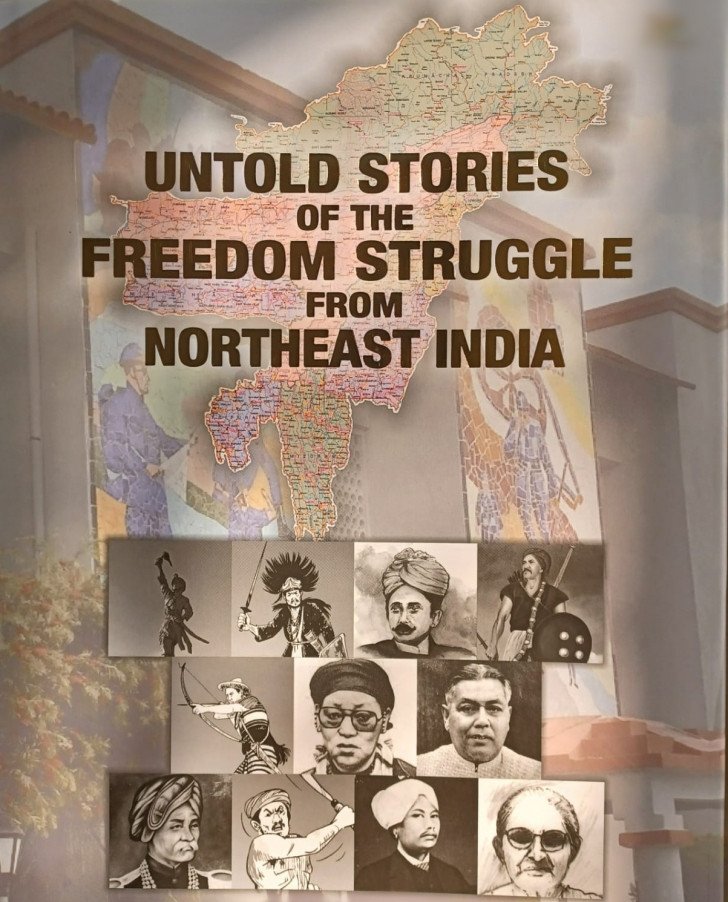Literature
Book recaps the untold stories of freedom struggle in N-E

Guwahati, Dec 18
Did you know that a 12-year-old girl from Assam by the name of Tileswari Barua is the youngest martyr of India's freedom struggle? Or that General Thangal of Manipur is the oldest martyr of India, having been hanged to death at the age of 80?
A new book titled 'Untold Stories of the Freedom Struggle from Northeast India' written by veteran Guwahati-based journalist and author Samudra Gupta Kashyap, has not only rediscovered these two stories, but has also brought together numerous other stories of patriotism, courage and sacrifice from across the northeastern region.
The book has been published recently by the Publications Division of the Ministry of Information and Broadcasting, as part of 'Azadi ka Amrit Mahotsav'.
Divided into seven chapters each dealing with one of the seven states of the northeast, the book brings to the fore hitherto unrecognised battles that freedom-loving tribal communities of the region fought against the heavily-armed, repressive, exploitative British.
It begins with the story of the first revolt led by Gomdhar Konwar two years after the British annexed Assam in 1826, records the execution of Piyoli Phukan and Jiuram Duliya Barua in 1830 and then unfolds, in a chronological manner, a series of incidents of the anti-colonial resistance till 1947.
The Maniram Dewan story and massacre of over 185 Hindustani sepoys in 1857, which had so long remained neglected at the national level, the subcontinent's first peasants' uprising at Phulaguri (1861) against the British, the Patharughat massacre (1894), the role played by women (including attainment of martyrdom by over a dozen of them), the Dhekiajuli massacre (1942), -- all of Assam -- come together in this well-researched book.
Likewise, the amazing manner in which the Khamti, Singpho, Adi, Mishmi and Wanchoo communities of present-day Arunachal Pradesh, the Khasi, Jaintia and Garo tribals of present-day Meghalaya, the Angamis of the Naga Hills, the Lushais of present-day Mizoram and the Kuki and Zeliangrongs of Manipur were engaged in bloody battles to protect their respective homelands from British subjugation have been brilliantly described.
Yet another episode described in detail is the Anglo-Manipuri War of 1891. The full-scale war the British waged on Manipur, the armed resistance leading to the killing of five top British officers, the martyrdom of Bir Tikendrajit, General Thangal, Kajao Singh, Chirai Naga and Niranjan Singh, the Battle of Khongjom and the heroism of Paona Brajabasi, Nupi Lan or Manipur's women warriors, takes the reader back in time to the dark days of British expansionism in the northeast.
The author has also described in detail the Muslim League conspiracy to include Assam in its Pakistan plan by way of engineering a silent demographic invasion, and how the Assamese leaders under Lokapriya Gopinath Bardoloi stood up against the silence of the All India Congress Committee to this issue.
"Bringing out all these from across the northeast was a huge challenge, especially because of lack of proper documentation of most of the incidents. In fact, barring Assam, Manipur and partially Meghalaya, the anti-colonial resistance movements in the other states have been hardly researched and documented. In many cases, one had to take help of British documents and reports and then recreate the stories from the opposite angle," Kashyap, who is currently a State Information Commissioner in Assam, told IANS.
"Certain stories, like the Khamtis under Ranuwa Gohain wiping out a British station and killing the eastern Assam administrator Col Adam White along with 80 of his Hindustani soldiers in Sadiya in January 1839, the way the Nagas defended Khonoma village from 1844 to 1879, the manner in which Lalsuthlaha, Ngura, Suakpuilala, Pasaltha Khuangchera, Ropuiliani, Zakapa, Hnawncheuva explained in the book.
Lushai chiefs of present-day Mizoram fought the better-equipped British forces, and were also dug out with great difficulties in the absence of proper documentation," Kashyap, who had as a senior writer and journalist reported northeast to the outside world for close to four decades, added.



































